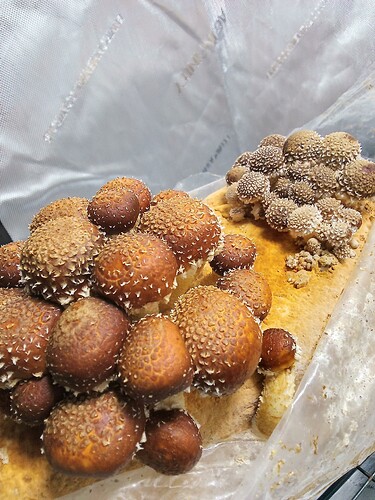A bit about me first.
- I am an educated mycologist, who left a career in food safety analytics to work in the cannabis industry.
- Currently, I am an extraction/analytics tech at a production laboratory
- I am working on my own experiments, in order to grow my understanding of the many processes utilized in the industry, and have been blessed with the opportunity to use the lab equipment on the weekends, as long as I bring in my own material.
- I do have limited prior experience in the industry, as I worked for a few seasons at a facility in Washington state doing extractions, about 5 years ago. I processed their unsaleable flower into crude oil, and did color-work on it, but thats about it. It was a significantly smaller facility than my current job.
I am currently tasked with designing an SOP for diamond manufacturing, though I’m fairly certain it’s just busy work. That being said, I want to learn, and will take any slack in the rope given.
Here’s the write up for my first diamond experiment,
please advise me on my process, hollah any suggestions/changes/holes you notice in it.
Literally, anything.
So,
If the amu of THCa is roughly 358, (which will matter later, once I actually do this)
then
- assuming 85% extraction on flower
- assuming 25% THCa content of flower by weight
- assuming perfect crystallization (for maths-sake)
- assuming insignificant conversion loss (again for maths-sake)
- assuming I don’t care about polymorphism (again, for maths-sake, though I’ll work backwards from the crystal to figure out because I want to know % terpene trapped)
For every 4.5 g of flower, one could theoretically precipitate 1 gram of crystalline THCa??
1 mole THCa = 358g
1 g THCa = .358 mole
25% by weight flower = 1 g flower = .25 g THCa = 4 g flower
85% extraction efficiency = about 4.5 g flower = nets 1 g THCa
Call it 5 grams for a bunch of elbow room in the actual physical process of extracting and precipitating,but for this theoretical phase lets keep the numbers toight.
Extraction method = super-chilled 200proof ethanol in a media bottle at 1:10 dilution
= 5 g flower (finely ground) + 45 g ethanol (.789g/ml = 57.03ml E+OH)
Shaken, not stirred, no more than a minute,
poured over a chilled vacuum funnel,
into another media bottlesample for hplc
- Post-Extraction - (the purge)
Place media bottle, with cracked lid, in a vacuum oven set to 45c
Put ice in the dang cold-trap
Purge vacuum oven with nitrogen / turn on vacuum pump / fine-tune vacuum with nitrogen-tank valve.
Check on it periodically till there’s 1/10 remaining, volumetrically. (record times for every process)
At this point, your solution should be 99% just your solution (little to no remaining ethanol)
[idea of using the vacuum oven is to keep your solution in the jar, as opposed to dealing with scraping it in and out of reaction flasks on a roto-vape)
Turn off vacuum pump, close nitrogen valve, kill the vacuum, check your cold trap (there shouldn’t be anything there that smells, ought to be just ethanol [99%], right?)
sample anything in there for the HPLC later, and for that matter, sample your solution for the HPLC later as well.
Add to your media bottle your desired terpenes, for a 1:1 dilution (volumetrically) (sample for HPLC)
Place bottle back in vacuum oven, and repeat nitrogen purge/vacuum process (turn on your oven)
Reduce oven temperature to 40c
Leave there over-night
In the morning, sample for HPLC
Before closing down the lab that night, HPLC sample
Next day, Repeat, until you have crystals
Do not disturb solution throughout the process.
Shoot me down, punch holes in this ship, I’m just trying to figure out as much ahead of time. (i’ll be weighing things out throughout the process so that I can, in fact, work backwards once I have the crystals, because I’m working out an SOP for this)
